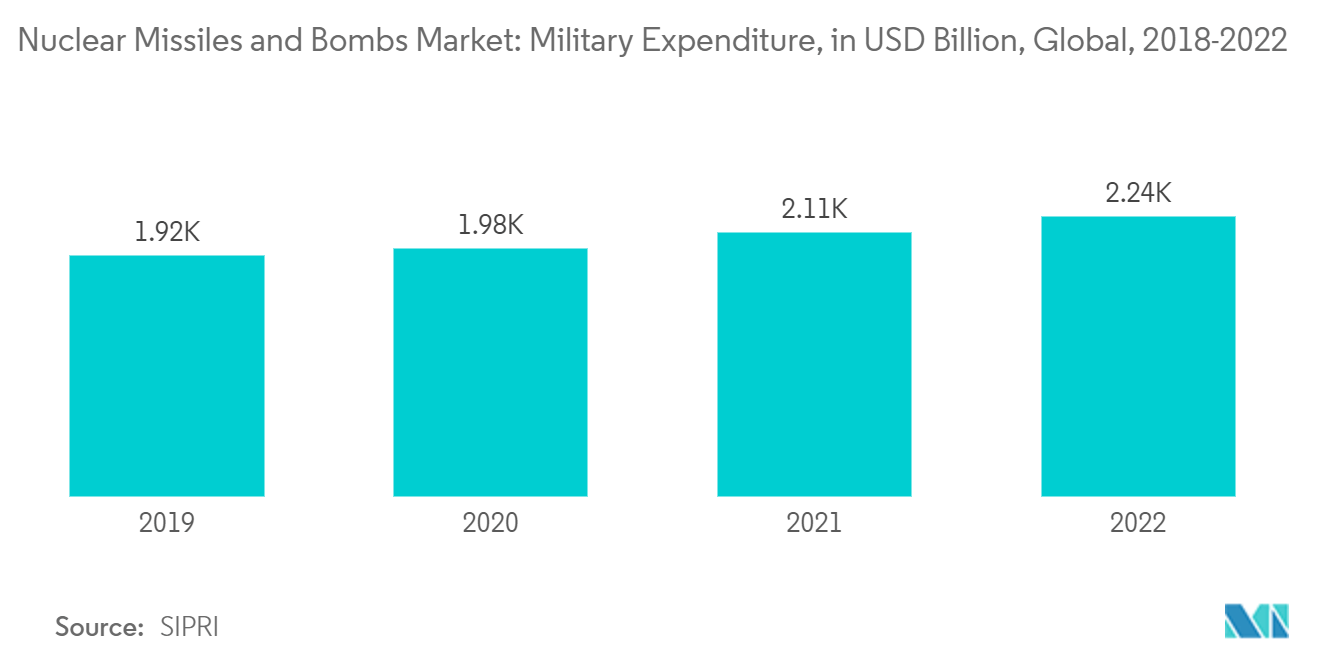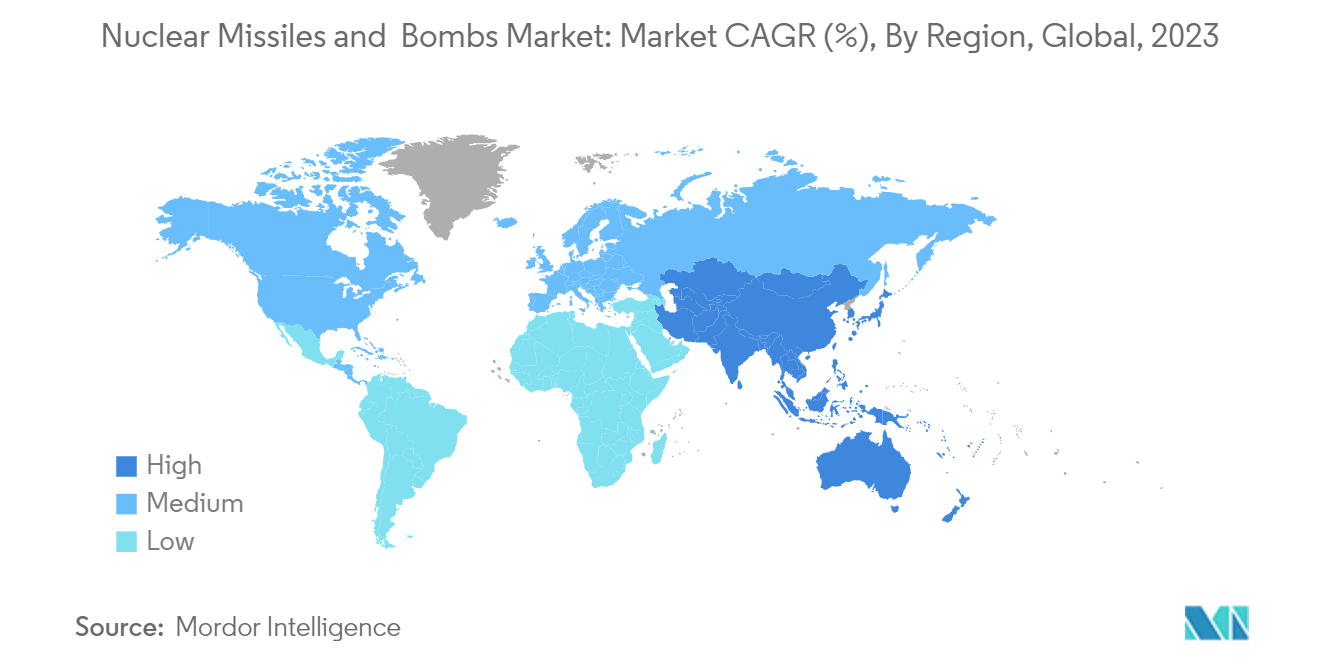Market Trends of Nuclear Missiles And Bombs Industry
Nuclear Missiles to Dominate Market Share During the Forecast Period
The nuclear missiles segment is expected to lead the market share owing to the advantages of missiles over bombs and rising defense expenditures. According to the Stockholm International Peace Research Institute (SIPRI), the global military expenditure in 2022 was USD 2,240 billion, which was 3.7% higher than the global military expenditure in 2021. The growth in defense budgets will support the nations to enhance their combat capabilities and help them execute their defense strategies as planned.
Nuclear missiles have a wide range of operations, ranging up to thousands of miles, which is not the case with gravity bombs. Also, nuclear missiles can be operated remotely so that the person launching the weapon does not have any physical or radiational effect following the blast. This may not be the case with gravity-dropped bombs, in which the pilot will be in near vicinity to the bomb. Suppose the gravity bombs are dropped utilizing a UAV. In that case, it must be survivable enough to penetrate modern air defenses and drop nuclear gravity bombs on the enemy territory, which is something only a few aircraft are currently capable of. Due to such advantages, the development and procurement of the nuclear missiles segment are currently high.

North America is Expected to Witness Highest Growth
North America is expected to lead the market growth during the forecast period owing to the increase in budget allocation for nuclear weapons programs in the US. The Congressional Budget Office (CBO) estimated in May 2021 that the US will spend a total of USD 634 billion over the next 10 years to sustain and modernize its nuclear arsenal, which is 28 percent higher than the previous 10-year projection released in 2019.
Also, the US stockpile of nuclear warheads and bombs is continually refurbished through NNSA’s Life Extension Program (LEP). Existing warheads are certified annually to be safe and reliable. The NNSA is currently pursuing a controversial and expensive plan to refurbish or replace nearly every warhead type in the stockpile.
As of 2021, American nuclear forces on land consist of 400 Minuteman III ICBMs spread among 450 operational launchers staffed by Air Force Global Strike Command. Those in the seas consist of 14 nuclear-capable Ohio-class Trident submarines, nine in the Pacific and five in the Atlantic. Nuclear capabilities in the air are provided by 60 nuclear-capable heavy bombers, 20 B-2 bombers, and 40 B-52s.


